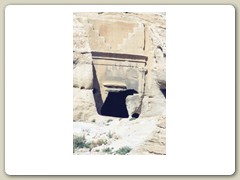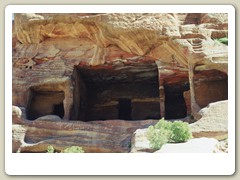Jordan
|
PetraClick on any image below to enlarge or start a slide show.  Walking through the siq into Petra Walking through the siq into Petra
 Walking through the siq into Petra Walking through the siq into Petra
 First image of Petra - The Treasury First image of Petra - The Treasury
 In front of the Treasury In front of the Treasury
 The Treasury The Treasury
 Picture taken from inside the Treasury building Picture taken from inside the Treasury building
 Petra Petra
 Petra Petra
 Petra Petra
 Outer Siq Outer Siq
 Outer Siq Outer Siq
 Outer Siq Outer Siq
 The Theater The Theater
 Tourist sign Tourist sign
 Urn Tomb Urn Tomb
 Byzantine Church Byzantine Church
 More of Petra More of Petra
 More of Petra More of Petra
 More of Petra More of Petra
 Winged-Lions Winged-Lions
 More of Petra More of Petra
 More of Petra More of Petra
 More of Petra More of Petra
 More of Petra More of Petra
 Royal Tombs Royal Tombs
 Royal Tombs Royal Tombs
 More of Petra More of Petra
 The Monastery The Monastery
 Looking out the back of Petra to more desert Looking out the back of Petra to more desertlightbox gallery cmsby VisualLightBox.com v6.1 Petra is located in Jordan, south of the Dead Sea, next to the town
of Wadi Musa. Now protected as a UNESCO World Heritage Site & classified
as one of the New Seven Wonders of the World, it lies hidden behind a
barrier of mountains in the rift valley east of the Wadi Araba desert.
Petra’s most notable landmark is the Canyon of the Crescent Moon, or
Treasury (El-Khazneh), which is carved into the living rose-red
sandstone.
PETRA
No site in
Jordan captures the visitor's imagination and takes his breath away as
dramatically as Petra. The amount of labor involved in carving the
magnificent structures in the colorful soft rock boggles the mind. When
first-time visitors learn that all of the structures they see were
burial places, and that the Nabateans' housing did not survive, many
cannot hide their bewilderment.
The
Nabateans first came here in the sixth century BC, and for many years
their capital was here. They gained control of lucrative trade routes
and carved their edifices into the colored stone at Petra (which
actually means "stone" in ancient Greek.) Among the legends about the
place, one holds that when Moses struck a rock and drew water (Exodus
17), it was here, in a place that has come to be called, appropriately,
Ayoun Mousa, or Moses' Spring.
The
Nabateans enjoyed centuries of prosperity in their city of stone, and
maintained a sort of coexistence with the Romans long after the latter
had gained control over most of the region. In 106 AD, however, the
Romans took over Petra as well. Earthquakes in 363 and 747 caused severe
damage, and Petra was cut off from the West for over 1,000 years. The
Beduin who lived among the stones guarded their secret place jealously,
refusing entry to outsiders.
Then, in
1812, a young Swiss explorer named Johann Ludwig Burckhardt took on the
alias of a devout Moslem named Ibrahim ibn Abdullah and entered Petra.
He told his suspicious guide that he had vowed to sacrifice a goat at
Jabal Haroun (Mt. Aaron, where the Beduin believe that Moses' brother
died and is buried.) Burckhardt's accounts of Petra were published in
Europe, and slowly, inevitably, the ancient city opened to outsiders
once again.
The local
Beduin - who lived in the rock tombs of Petra until the mid-1980s, when
the Jordanian government moved the last of them to neighboring Wadi
Mousa -have long since overcome their distaste for foreigners. Today,
they welcome visitors wholeheartedly and go out of their way to be
hospitable.
THE SIQ
The passage
into Petra begins with a walk or a ride through the narrow passageway of
more than one kilometer in length. On each side of the dirt path,
brilliantly colored rock rises toward the heavens. The closer you get to
the Treasury, the more vivid the shades of red, orange and pink seem to
become.
THE OUTER SIQ
An opening
in the brilliant red and pink stone mountainside to the right of the
Treasury leads to the theatre and the city center. As if to make sure
that visitors have no mistake about the importance the Nabateans of
Petra placed on honoring their dead, the passageway - called the Outer
Siq- is lined with countless tombs cut into the stone mountains.
At the base
of the cliffs that make up the Outer Siq, Beduin boys and men sell a
variety of souvenirs, including Nabatean coins and other relics, as well
as imitations. The best-known souvenirs of Petra, however, are bottles
of colored sand depicting camels, mountains and other scenes from the
Rose-Red City. The tradition of arranging different colors of sand in
bottles has been around for the past few decades - making it a very new
craft, by Nabatean standards!
THE TREASURY
Nobody knows why
the first facade cut into stone that greets people as they emerge from
the Siq is called the Treasury; many things about Petra remain a
mystery, but have no doubt about it: this building was always a burial
site and never had anything to do with money matters. The well-preserved
facade is decorated with a rich variety of symbols
related to
death: Nabatean gods in charge of guiding the souls of the dead, Medusa
heads, eagles and winged victories.
THE THEATRE
It may look
Roman, but this theatre was built by the Nabateans between 4 BC and 27
AD in the same painstaking fashion that they built all of Petra. All 33
rows of seats, with enough space to seat 7,000, were carved into a stone
mountainside. Considering the tools available to them and the level of
exactitude with which they completed their work, the theatre is far more
impressive than any typical Roman counterpart. Scholarly opinion is
divided as to whether the theatre was used for entertainment and
political gatherings like many other theatres in the region - or for
gatherings of a religious nature. Given the setting in the midst of a
giant cemetery, far from the city center, this latter suggestion may be
realistic.
Locating
the theatre in a central place along the Street of Facades must have
been of great importance to the Nabateans, for they destroyed and
damaged many burial rooms in order to carve the rows of seats into the
stone.
TEMPLE OF THE WINGED
LIONS
Built
around 27 AD, the temple was dedicated to one of the Nabateans' female
gods. This was a central point of life in Petra until a fire destroyed
much of the structure in the early second century. After that, it served
as dwellings for Nabatean families, until the 363 earthquake leveled it.
Finds from the archeological excavations here are on display in the
archeological museum in Petra.
THE ROYAL TOMBS Many details about the Royal Tombs, opposite the theatre, remain unclear. Scholars agree that they are, indeed, tombs, but the only reason they are deemed to be royal is that they are so elaborate.
At the top
of the stairs to the tombs, the Urn Tomb is the first to be encountered.
The
North of
the Urn Tomb, separated by several other facades, is the Corinthian
Tomb, which incorporates a small-scale copy of the Treasury in its
facade. Next door is the Palace Tomb. Originally three stories high, the
massive facade's third story was built atop the rock. As if to bear
testament to Nabatean construction, the third story has all but collapsed
over the ages. The first two stories, chiseled into the mountain,
survive for all to see.
ED-DEIR (THE
MONASTERY)
The hike through
Wadi ed-Deir is a pleasant - if uphill trek that passes several
impressive Nabatean monuments. The advantage of being in a continual
ascent is that the trail offers
striking
views of the entire central part of Petra.
Upon reaching the
clearing at the end of the trail, you will turn to face ed-Deir, the
largest edifice in all of Petra. Measuring 45 meters by 50 meters, the
facade was completed in the mid-first century AD and it served as a
feasting hall in honor of the dead.
By the time
visitors reach ed-Deir, the design and style seem familiar. The facade
is a larger, less-ornate version of that found at the Treasury. Like the
Treasury, this edifice's name also has no bearing on its function. It
has been called the Monastery in English because at the back of the hall
there are several crosses carved and painted on the walls. This is
probably a reflection of the Christian use of the place in the fourth or
fifth
centuries.
|
Copyright ©1999 by
John Walter. All
rights reserved.
The
website contents may not be copied, published or duplicated without consent.